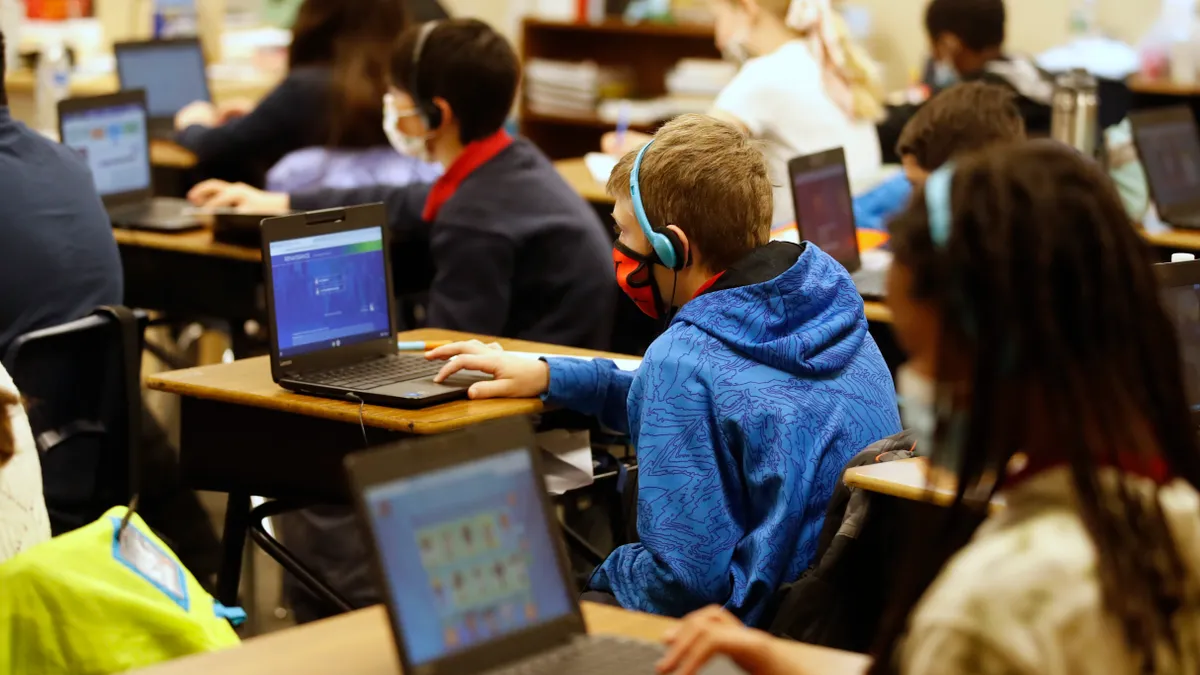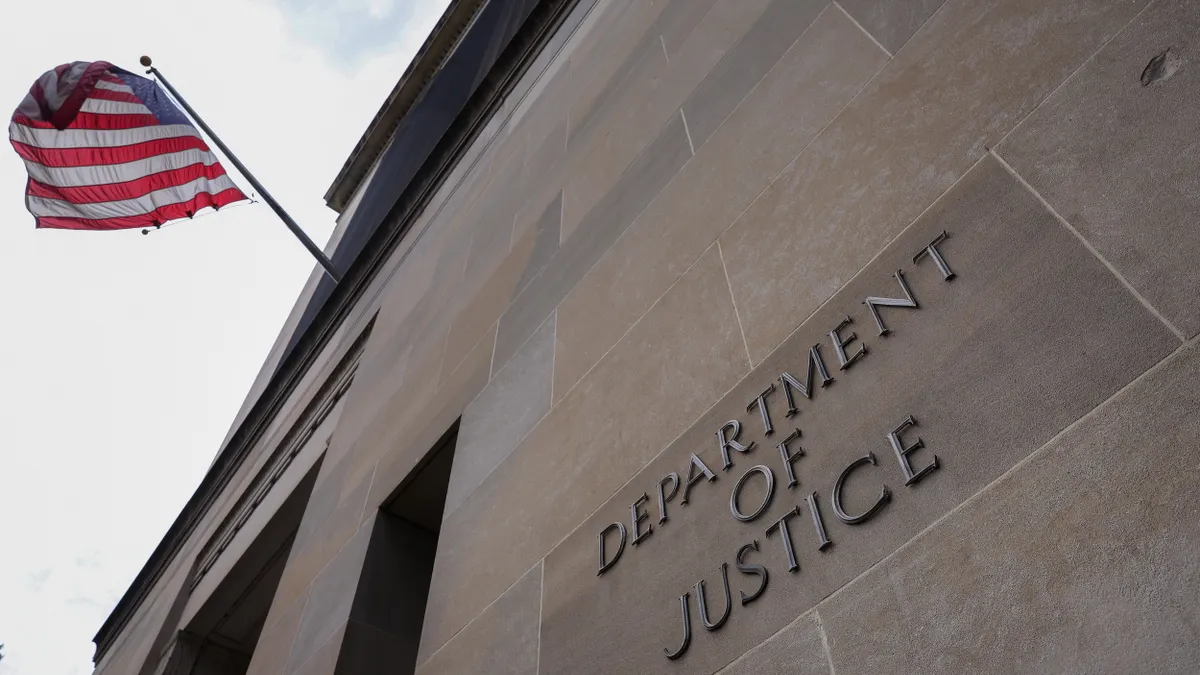One of the most disruptive pandemic factors for in-person student learning last school year was quarantines — forced stay-at-home orders due to student and staff illnesses or close contact with people infected with COVID-19.
The temporary student absences from in-person instruction were not supposed to happen as frequently this school year because last school year’s data showed low COVID-19 transmission rates in schools that used preventative measures and because vaccinations are more widely available now. But just days after the new school year began, quarantines are becoming a routine of this school year, too. Here are just a few examples:
-
By its second week of school, the Marion School District in Arkansas ordered more than 800 student and staff quarantines due to close contacts with people who had tested positive.
-
In its first week of school, Palm Beach County Public Schools in Florida recorded 231 confirmed positive cases of COVID-19 in staff and students, leading to 440 quarantines by Aug. 11, the second day of the school year, Superintendent Michael Burke told MSNBC.
-
Warren County Public Schools in Bowling Green, Kentucky, had more than 700 quarantines a week into the new school year, Superintendent Rob Clayton said during a press briefing.
-
The School District of Pickens County in South Carolina is moving to fully virtual instruction from Aug. 16-20 after 634 students and 30 employees were asked to quarantine, the district announced Friday.
Unlike last school year, when many quarantined students had access to online synchronous or asynchronous lessons, some states and school districts are prohibiting or limiting that option. In some localities, policies are being rewritten frequently based on changing state or local guidance and community health conditions.
School systems are also adjusting policies for student absenteeism, staff sick days, remote learning, quarantine timelines and communication responsibilities in reaction to the pandemic’s continued disruption to in-person learning.
“I think in terms from what we’re experiencing on our end that looks different is really how it’s impacting our school-aged students and the speed in which students and our staff are not only contracting the virus, but also, as I mentioned earlier, how that impacts the number of quarantines,” Clayton said in the Warren County briefing.
Quarantine approaches vary
Quarantine policies for the 100 largest school districts in the nation differ in scope and strategy, according to new research from the Center on Reinventing Public Education. Using publicly accessible notices and documents from school district websites, board meetings and social media feeds, CRPE found that of the 100 districts studied, 57 had specific quarantine protocols as of Aug. 11, said Bree Dusseault, a CRPE researcher.
Of those 57 districts, some have not offered many details about quarantine logistics, while some have said they will continue with their policy set in place during the 2020-21 school year.
“There are probably more questions than answers right now with what quarantining is going to look like,”

Bree Dusseault
a researcher with the Center on Reinventing Public Education
One common factor in districts with quarantine policies, Dusseault added, is they are giving different quarantine timelines for people who are vaccinated and those who are not.
“That, I think, is actually probably the biggest difference, which is just that you may find students getting different access to in-person instruction just based on their vaccinations,” Dusseault said. "It has a lot of implications for what students will experience back in school.”
Guidance from the Centers for Disease Control and Prevention recommends fully vaccinated staff and students in close contact with someone who tests positive for COVID-19 do not need to quarantine if they are asymptomatic but should wear a mask for the next 14 days or until they receive a negative COVID-19 test.
Unvaccinated people — including students under age 12 who are not yet eligible for COVID-19 vaccination — should be tested if they are in close contact with a COVID-19-positive person, but regardless of that test result, they should quarantine between 7 to 14 days based on local or personal circumstances.
Of the school quarantine policies CRPE has reviewed, there was scarce information about the learning expectations for students who need to stay at home for multiple days, Dusseault said, adding some districts’ policies say they will not offer virtual learning to quarantined students because of state law prohibiting or restricting it.
“There are probably more questions than answers right now with what quarantining is going to look like,” Dusseault said.
One district’s approach
The 710-student Premont Independent School District in Texas had very few school closures and quarantines last school year and was able to offer in-person learning all year long. Still, every switch from in-person learning to remote learning was disruptive, particularly when teachers in hard-to-staff subject areas were absent, said Superintendent Steve VanMatre.
The district also saw drops in student academic achievement, especially for 20% of students who opted to learn virtually last school year, he said
This school year, the state has said it will not financially support virtual learning opportunities, except in “remote conferencing” situations where students are quarantining because they are a close contact of someone who has COVID-19, or because of other medical conditions, according to a proposed policy. That remote instruction, however, cannot exceed 20 days per student over the school year.
Curtis Culwell, executive director of the Texas School Alliance, which represents 43 school districts in the state, said the Texas Education Agency and education commissioner are currently considering guidance on what types of instructional practices will be considered for remote conferencing.
VanMatre said planning for this school year has been harder because the flexibilities for offering remote learning have been removed and because of concerns younger students are susceptible to the highly transmittable COVID-19 delta variant.
“It seems like it's preying on school-aged children that are vulnerable,” VanMatre said.
His district is offering longer-term remote learning to students in grades 1-6, at least for the first half of the school year, and will use American Rescue Plan funds to pay for the program. Enrollment is open to students in other districts, and as of Aug. 11, there were 123 applications.
“There's no doubt in my mind that the best quality of education we can provide is face-to-face… but I respect a different opinion of those parents that are frightened,” he said.
‘Communicate, communicate, communicate’
While some school communities have been caught off-guard with the unexpected need to implement quarantines this school year, many are drawing from the lessons they learned last school year — the first full academic year of the pandemic — to prepare for stay-at-home orders this fall.
Dusseault said one suggested best practice is to provide parents with details about how learning during quarantines will be structured. That information should be shared before stay-at-home orders are given so districts can build trust in school communities and maintain strong enrollment figures if parents know what to expect if their child is sent home to quarantine.
That includes making sure students have a mobile device to use at home, can access the internet and learning platforms, and know whether lessons and assignments will be self-directed or provided synchronously.
When asked about quarantine best practices, Superintendent Michael Lubelfeld of the North Shore School District 112 in Highland Park, Illinois, said by email, “Communicate, communicate, communicate.”
Lubelfeld’s district, which begins school this week, has frequent written and video updates with safety information and updated COVID-19 and learning policies.
Even if a district’s policy is evolving, any information that can be provided to parents and educators is better than nothing, Dusseault said.
Having a districtwide or schoolwide policy and understanding of roles and responsibilities for parent notifications of close contacts, positive cases and quarantines will help bring organization and clarity to what might be a stressful process, she added.
Additionally, schools should be using safety measures, such as mask wearing, social distancing, contract tracing, testing, plus other measures to help prevent the spread of COVID-19 and in turn reduce the need for quarantines, Dusseault said.
“It's so important that districts move through this moment with very clear communication, very clear sense of protocols and duties of what to get done, and don't lose sight of the bigger goal which is getting kids back into classrooms and setting their hearts and minds back on fire with the love of learning and the chance to be around their classmates,” she said.




















